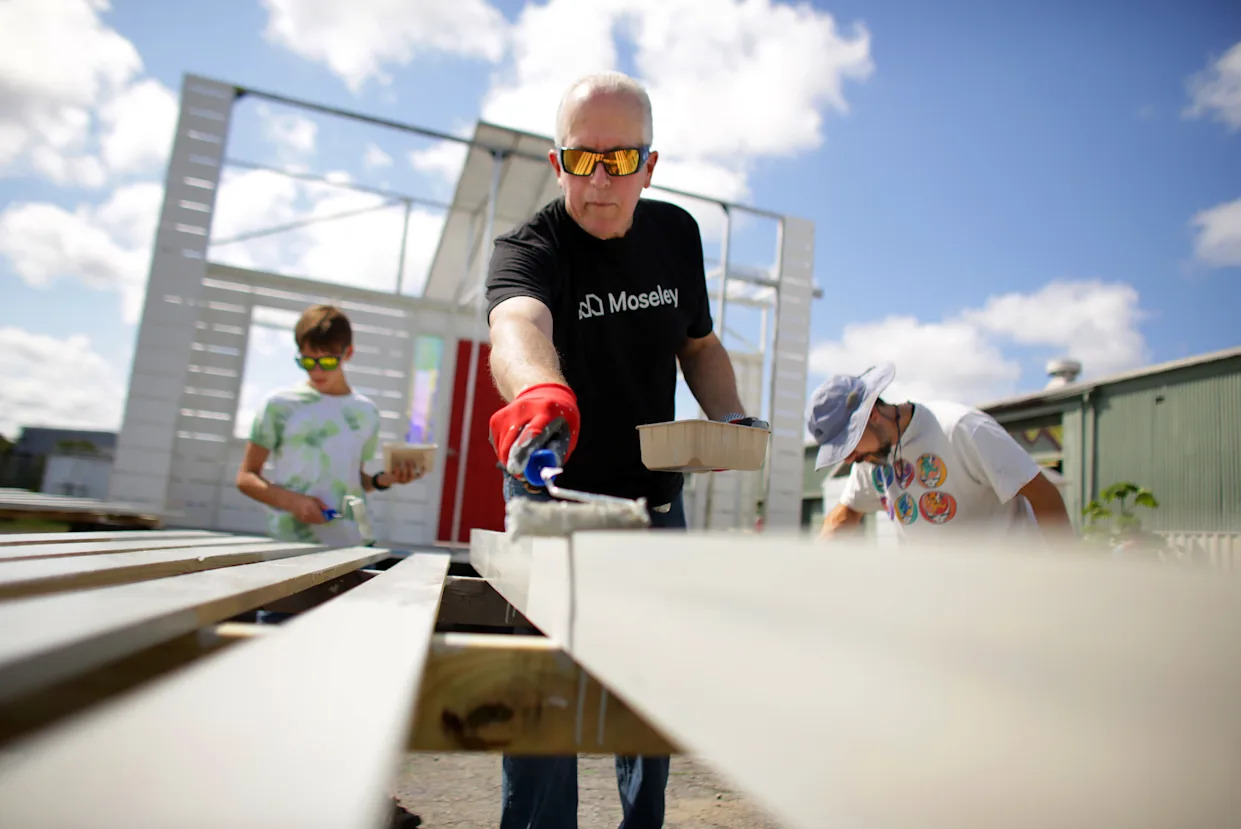
These architects aren’t playing around.
For the next few weeks, teams from four architecture firms are gathering in Norfolk to build playhouses as part of the American Institute of Architects’ Pop-Up Park initiative. The structures are slated for installation in the Seatack neighborhood of Virginia Beach, and the teams will continue working every Saturday morning and Tuesday evening before the grand opening in October.
“There’s all kinds of societal issues that design professionals like architects deal with, so we wanted to somehow reach out to the general public and try to give them education about that,” said Bernadette Keplinger, executive director of the Coastal Virginia chapter of AIA. “So one of the ways we were talking about three years ago, was an idea of activating spaces that didn’t necessarily have a park for residents to enjoy.”
This isn’t a first for Hampton Roads — a pop-up park was built for Park Place in Norfolk and another for South Norfolk in Chesapeake. Keplinger said that for each neighborhood, designing the park closely mirrors the process for a commercial project.
The teams met with residents of the Seatack community about their wants and needs for the park, and through the design process, they made tweaks. Now, during the build phase, the teams will execute their designs at the 757 Makerspace in Norfolk before transporting them to the neighborhood this fall.
“(Residents) said that one of their most important things for their community is their history, because they’re historically one of the oldest — if not the oldest — Black community on the on the East Coast or in the United States, quite honestly,” Keplinger said. “History is very important to them, so our team came up with the idea: ‘Well, we can design four different playhouses for your park that represent an important part of your history.'”
Related Articles
The teams will unveil their builds Oct. 11. The playhouses will stay in the Seatack neighborhood for about two weeks, but architect Tony Lim, one of the leaders of the project, said that the team is working with local leaders in Seatack to find permanent locations for the playhouses.
“In the community, a lot of (residents) said they wanted it to be durable and to last,” Lim said. “That’s kind of the direction that we’re taking them, in terms of designing and building them. We’re thinking about how to make these last outdoors.”
In addition to community outreach, camaraderie between teams has been one of the highlights of the project, Lim said. Companies outside of architecture, including groups in construction and contracting, have also come to volunteer and contribute to the project.
“There’s a lot of energy, and people are very excited to do it,” he said. “We have a text group chat that’s got all of the volunteers from the four firms, and we try to make that an open channel of text like, ‘Oh, this is what we’ve done today,’ and ‘this is what we’re planning to do.’
“It’s amazing to just see the progress in the chat that everyone else can see. That motivates everyone to just be on top of things and match their progress.”
Eliza Noe, [email protected]








Comments